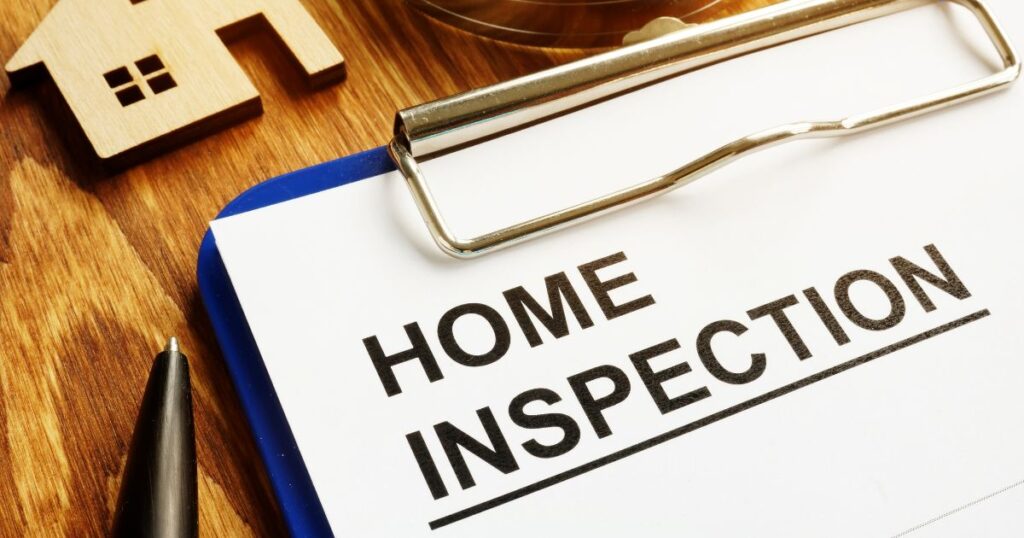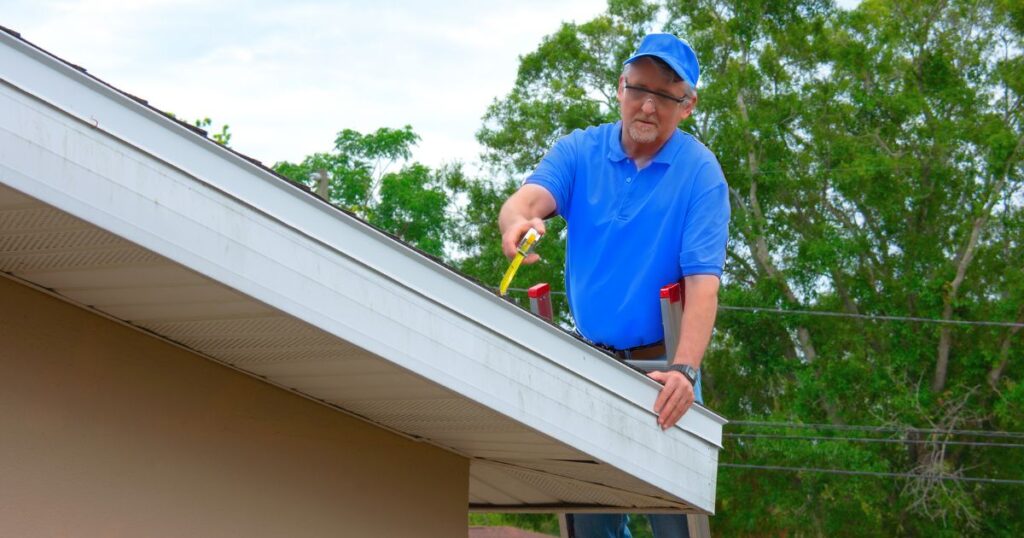Can I Refuse a Home Insurance Inspection
Navigating the world of home insurance can be daunting, especially when it comes to understanding the ins and outs of home insurance inspections. Many homeowners find themselves wondering if they can refuse an inspection. The short answer is yes, you can refuse, but it may come with consequences. Let’s dive into the details to help you better understand this process.

A home insurance inspection is an evaluation conducted by a certified home inspection company to assess the condition of your home. These inspections are typically done when you first apply for insurance, when you renew your policy, or when there has been a significant change to your property.
The Purpose of Inspections
The primary goal of the inspection is to identify any potential risks that could lead to claims. Insurance companies want to ensure that your home meets their standards for safety and maintenance before providing coverage. This process helps them mitigate potential losses from insuring properties that may require significant repairs or pose higher risks.
Types of Inspections
There are various types of inspections that may be conducted based on the insurer’s policies and the specifics of your home. Some inspections are comprehensive, covering both the interior and exterior of the property, while others might focus on specific areas of concern. Understanding the type of inspection you might undergo can help you better prepare for it. The most common home inspections are:
- Roof Certification Inspection – Evaluates the condition, age, and remaining life expectancy of your roof, information that is often needed for insurance underwriting.
- Four Point Inspection – Focused on the four key systems insurance providers require: roofing, electrical, plumbing, and HVAC.
- Wind Mitigation Inspection – Identifies wind-resistant features of your home that may qualify you for significant insurance discounts.
- Full Home Inspection – A comprehensive top-to-bottom assessment of your property, including structural systems, roofing, plumbing, electrical, HVAC, and more.
Who Conducts the Inspections?
Typically, inspections are carried out by licensed professionals employed or contracted by a home inspection company. These inspectors are trained to identify issues that could impact the safety and insurability of your home. Knowing who will be inspecting your property can provide peace of mind and help you prepare appropriately. At My Safe Home Inspection, all our inspectors are licensed, insured, and have undergone Level 2 background screening, drug testing, and fingerprinting.
What Do Home Insurance Inspectors Look For?
Inspectors generally focus on several key areas:
- Roof Condition: A damaged or aged roof can lead to water damage, which is a significant risk for insurers.
- Plumbing and Electrical Systems: Outdated or faulty systems can pose a risk of leaks, fires, or other hazards.
- Foundation and Structure: Cracks or signs of structural damage can indicate potential issues.
- Safety Features: Smoke detectors, fire extinguishers, and security systems are often checked.
- Exterior and Interior Maintenance: The overall upkeep of the property, including gutters, siding, and landscaping, is assessed.
Detailed Assessment of Key Areas
Each of these key areas is assessed in detail. For example, during a roof inspection, the inspector will not only look for missing shingles but also assess the overall integrity and age of the roofing materials. Similarly, for plumbing and electrical systems, inspectors will check for compliance with current safety standards and regulations.
Importance of Safety Features
Safety features play a crucial role in the inspection process. Homes equipped with modern safety devices are often viewed more favorably by insurers. This includes not just basic features like smoke detectors, but also advanced systems like carbon monoxide detectors and home security systems.
The Role of Maintenance
Regular maintenance is critical to a favorable inspection report for insurers. An inspector will look for signs of neglect, such as peeling paint, overgrown landscaping, or clogged gutters. These seemingly minor issues can indicate a lack of overall home care, increasing the risk of future claims.
Can You Get Homeowners Insurance Without an Inspection?

In some cases, you might be able to get insurance without an inspection, especially if the home is new or has been recently inspected. However, most insurance companies require an inspection to properly assess the risk of insuring your home. The most common inspections asked for by your insurer are a four point inspection and a roof certification inspection.
Exceptions to the Rule
Certain situations may allow you to obtain insurance without an inspection. For example, if your home was recently built, insurers might rely on building codes and inspections conducted during construction. Similarly, if you’ve had a recent inspection from a previous insurer, that report might suffice.
Consequences of Skipping an Inspection
Failing to allow an inspection could result in higher premiums or even denial of coverage. Insurers might perceive the lack of an inspection as a red flag, indicating potential hidden issues. It’s essential to understand what your insurance company requires and comply with their requests to avoid these potential pitfalls.
The Impact on Policy Terms
Without an inspection, insurers may include additional conditions or exclusions in your policy. This could mean limited coverage for certain types of damage or increased deductibles. Understanding these potential impacts can help you make informed decisions about your insurance.
How to Prepare for a Home Insurance Inspection
Preparation is key to ensuring your home passes inspection requirements and secures the best possible insurance terms. Here are some steps to take:
Create a Homeowners Insurance Inspection Checklist
- Roof: Check for missing or damaged shingles and ensure gutters are clean.
- Plumbing: Look for leaks, drips, or signs of water damage.
- Electrical Systems: Ensure wiring is up-to-date and there are no exposed wires.
- Foundation: Inspect for cracks or signs of settling.
- Safety Devices: Test smoke detectors and ensure fire extinguishers are accessible.
Conduct a Thorough Self-Inspection
Before the official inspection, conduct a thorough self-inspection using your checklist. This proactive approach allows you to identify and address potential issues on your own terms. Consider enlisting the help of a knowledgeable friend or a professional for a second opinion.
Engage Professionals for Necessary Repairs
For any major issues you identify, particularly those involving complex systems like plumbing and electrical, consider hiring professionals. Not only does this ensure the work is done correctly, but it also provides documentation that repairs were completed by certified experts, which can be beneficial during the inspection.
Document Your Efforts
Take photos of any repairs or upgrades you’ve made. This documentation can be useful if any questions arise during the inspection. Be sure to keep your invoices and receipts for easy documentation of upgrades made.
Keep Maintenance Records
Maintain records of all maintenance work performed on your home. Receipts, warranties, and service records can provide evidence of your commitment to keeping your home in good condition. These records can be invaluable if there are disputes over the findings of the inspection.
What Happens if You Fail a Homeowners Insurance Inspection?
While a home inspection doesn’t receive a pass/fail grade, if your home inspection shows significant structural and safety issues, the insurance company might require you to make specific repairs or improvements before they provide coverage. In some cases, they might offer coverage but at a higher premium.
Reasons You Might Fail an Inspection
- Roof Damage: Leaks or missing shingles can lead to unfavorable results on a roof inspection and 4 point inspection.
- Old or Faulty Electrical Systems: These can pose a fire risk, which insurance companies don’t like to see.
- Poor Plumbing: Lack of healthy plumbing systems can lead to damage down the road, and can indicate future claims risks.
Steps to Take After Failing an Inspection
Should you “fail” an inspection (meaning your home’s structure and/or systems are in poor condition), the first step is to understand the specific reasons for the failure. Reference the detailed report provided by your inspector and prioritize the issues based on risk and cost. Addressing these issues promptly can help you secure coverage and prevent further complications. If you make upgrades within a specific timeframe, we will come out to perform a reinspection at a discounted rate.
Negotiating with Your Insurer
In some cases, you might be able to negotiate with your insurer for a grace period to make necessary repairs. Open communication with your insurance company can lead to a mutual understanding and potentially more favorable terms once issues are resolved.
Exploring Alternative Insurance Options
If your current insurer is unwilling to provide coverage after a failed inspection, consider exploring alternative options. Different insurers may have varying criteria and may be willing to offer coverage under different conditions.
Can You Refuse a Home Insurance Inspection?

While you can technically refuse a home insurance inspection, doing so may not be in your best interest. Refusing might lead to:
Understanding the Implications of Refusal
Refusing an inspection can signal to insurers that you might be hiding potential issues, leading to:
- Higher Premiums: Without an inspection, insurers might charge more to cover unknown risks.
- Policy Cancellation: Some companies may cancel your policy if you refuse an inspection.
- Limited Coverage Options: You may find it challenging to secure coverage with other insurers.
Weighing the Pros and Cons
Consider the potential benefits of allowing an inspection versus the drawbacks of refusal. While inspections might seem intrusive or inconvenient, they ultimately serve to protect both you and the insurer by ensuring accurate risk assessment.
Exploring Alternative Solutions
If you’re uncomfortable with certain aspects of the inspection process, discuss your concerns with your insurer. They may offer alternative solutions or adjustments to the process that address your concerns while still fulfilling their requirements.
How Often Do Insurance Companies Inspect Homes?
The frequency of home inspections varies by insurance company and policy. Generally, inspections occur:
Frequency Based on Policy Type
The type of policy you have can impact how often inspections are conducted. Standard policies may require inspections less frequently than high-risk or specialized coverage options, which might necessitate more regular evaluations.
Trigger Events for Inspections
Certain events can trigger an inspection, such as:
- When Initiating a New Policy: To assess the initial risk.
- Upon Policy Renewal: To ensure the home remains in good condition.
- After Significant Changes: Such as renovations or major repairs.
Variations by Insurer
Different insurance companies have different policies regarding inspection frequency. It’s important to understand your specific insurer’s requirements and how they might apply to your situation. Regular communication with your insurer can help clarify these expectations.
What To Expect During a Home Insurance Inspection
During an inspection, an inspector will tour your property, checking the key areas mentioned earlier. They will take photos and detailed notes to document the condition of your home.
Preparing for the Inspection Day
On the day of the inspection, ensure that all areas of your home are accessible, including attic access. Clear any clutter that might obstruct the inspector’s view and make necessary documents readily available. This preparation can help streamline the process and reduce stress.
Engaging with the Inspector
Feel free to engage with the inspector during their visit. They may offer insights or suggestions for improvements that can benefit both your home and your insurance coverage. Being present allows you to address any questions or concerns in real-time.
Post-Inspection Follow-Up
After the inspection, review any feedback and reports provided by the inspector. Use this information to make informed decisions about necessary repairs or improvements. Following up with your insurer about the inspection results can also clarify any next steps.
Conclusion
While refusing a home insurance inspection is possible, it is generally not advisable. Home inspections help insurance companies assess risk and provide appropriate coverage. By understanding what inspectors look for and how to prepare, you can ensure that your home meets the necessary standards and secure the best insurance terms.
Maintaining Home Value and Safety
Remember, maintaining your home and addressing any issues promptly not only helps with insurance but also preserves the value and safety of your property. Regular maintenance and timely repairs can prevent future complications and enhance your living environment.
Building a Strong Relationship with Your Insurer
Developing a strong relationship with your insurer can lead to better communication and more favorable terms. Being proactive and transparent about your home’s condition demonstrates responsibility and can result in a more trusting partnership.
Final Thoughts
Ultimately, the goal of a home insurance inspection is to protect both you and your insurance provider. Embracing the process and using it as an opportunity to enhance your home’s safety and value can lead to a more secure and satisfying homeownership experience.
Ready for your Florida home inspection? Our experienced team is ready to help you every step of the way.
